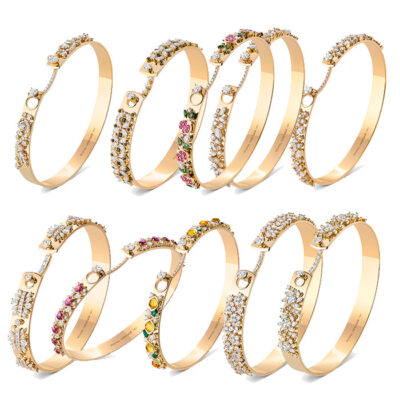Style
08 January 2020
Share
8 things you didn’t know about cameos
Passionate flights of fancy, golden ages, records broken, forgotten techniques… A few fragments from a thousand-year-old history.
By Sandrine Merle.
1. Record-breaking cameo
During the sale of cameos and intaglios at Christie’s New York last April, the Getty museum acquired 17 lots, including this black Roman chalcedony engraved with a portrait of Antinous, lover of the Roman emperor Hadrian. With its missing section imagined in gold by the sculptor, this (131–38 avant B.C.) intaglio, considered to be one of the most beautiful, fetched $2 million.
2. Souvenir cameos
In the 18th century, gentlemen undertook the Grand Tour around Europe, a journey of several months designed to polish their classical culture. They brought back manuscripts, paintings, sculptures, cameos and intaglios with which they filled their castles, as souvenirs or as objects of study. They also brought back dactyloteques, small boxes filled with moulds of these engraved stones in glass, ceramics or plaster, which can now be picked up in sales and antique shops.
3. Celebrity cameos
Before Rihanna (a cameo fan) there was Simonetta Cattaneo and Madame de Pompadour. In Botticelli’s painting, the former wears a famous cameo from the Medici collection, the “Seal of Nero”, a cornelian representing “Apollo and Marsyas”. In Boucher’s painting, the latter is wearing an antique cameo representing Louis XV. Madame de Pompadour was responsible for the soaring popularity of glyptics, which she loved, notably by becoming the protector of the engraver Jacques Guay. She herself was an accomplished sculptor.
4. Gourmet cameos
Catherine the Great acquired her first engraved gems in 1763. In 1790, she owned 10,000 of them and described her passion as an “imperial affair”. So much so that she ordered a service of 797 pieces from the Sèvres porcelain factory for her favorite Prince Grigory Potemkin. The scenes are inspired by those of the Louis XVI collection, graciously lent by the latter. To be seen at the Hermitage Museum or bought, in a new edition, from Bernardaud’s.
5. Empire cameos
During Napoleon’s reign, all women wore cameos and intaglios as necklaces, belts or earrings. Wishing to follow in the footsteps of the great emperors associated with the golden ages of glyptics, Napoleon encouraged the development of this art. The women of his family took to the fashion, as can be seen in the magnificent diadems of Empress Josephine made of shell cameos, which are softer and easier to work than stones. His sister, Pauline Bonaparte, appears in a total cameo look.
6. Rubens cameos (horizontal diaporama)
The painter Rubens was passionate about antique cameos. “Rubens combines the knowledge of scholars, the finances of a prince and an artist’s judgement on small antique objects of unequal perfection”, wrote the authors of “Rubens, des camées antiques à la galerie Médicis”. For the twenty-four works dedicated to Marie de Medici, he freely drew inspiration from cameos as they constitute a repertoire of themes and motifs, as shown by the echoes between “The Presentation of the Portrait” and the cameo “The Marriage of Cupid and Psyche” belonging to his collection. Imagine a game of “spot the difference” and have fun searching!
7. Dressed cameos
In the early 2000s, Victoire de Castellane, artistic director of the Dior jewelry, became interested in engraved stones. She customized old models with earrings or a necklace, reviving the cameo technique that was very fashionable in the 19th century.
8. Towards a contemporary golden age?
There are two clans among avant-garde designers. Some of them, such as Anna Porcu, Barbara Paganin and Zoe Arnold, incorporate antique cameos into their compositions. Others are bringing innovations to the technique: Shinji Nakaba (horizontal diaporama), the German Alexander Blank, for example, replaces antique profiles with comic book faces and precious stones with high-density black foam.
Featured image: Pauline Bonaparte and Barbara Paganin © Alice Pavesi Fiori
Barbara Paganin, Zoe Arnold et Alexander Blank are available at the Mazlo gallery
Related articles:
Kazumi Arikawa, cameo and intaglio addict




















